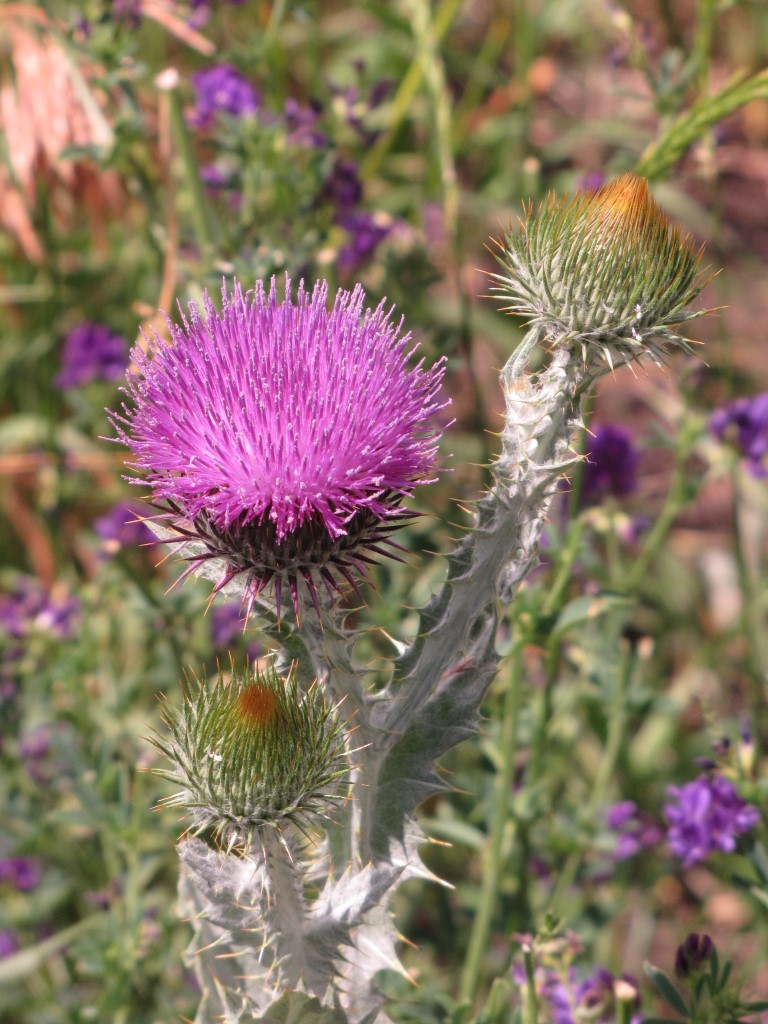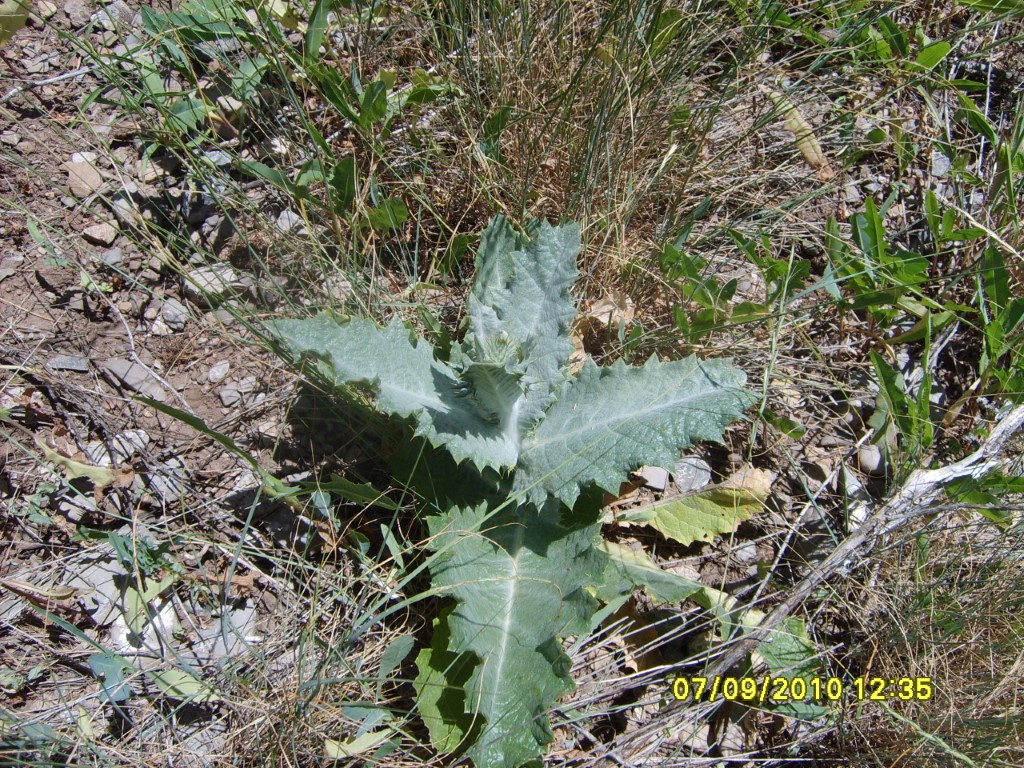
Scotch Thistle

Description
Scotch thistle is a biennial forb in the Asteraceae (daisy) family. It grows from a fibrous taproot to form a basal rosette in its first year of growth; in the second year of growth, it produces one to many stems that are usually between 2 to 6 feet tall, but may reach up to 10 to 12 feet tall. Stems have broad wings. Leaves are large and may reach up to 2 feet long and 1 foot wide. Leaf margins are usually wavy and toothed with sharp spines. Leaves occur alternately and clasp the stems; they decrease in size up the plant. Spines occur on the tips of leaves, on wings that run vertically on the stems, and sometimes on the rib on the bottom of leaves. The leaves and wings are heavily pubescent, with woolly hairs covering most surfaces of the plant giving it a gray to gray-green appearance. Scotch thistle flowers throughout the summer from late-June to early-September. Flowers are terminal and usually solitary or occurring in small clusters. Flowers are made up of florets. Florets may be white to purple and form a dense disk (1 to 3 inches across) enclosed in spiny bracts. Seeds are oblong to cone-shaped achenes with long pappi attached directly to the seed.
Origin and Spread
Scotch thistle is native to Eurasia and was likely introduced to North America in the 1800s possibly as an ornamental. It spreads solely by seeds which are readily dispersed by the wind. Additionally, seeds may be spread by animals, water, humans, and equipment. Scotch thistle is found in disturbed sites, along roadsides, and at trailheads and other recreational sites.
.png)
Management Options
Prevention and cultural control strategies should be utilized as much as possible. Clean gear and equipment, use certified weed free forage, limit disturbance during construction, and monitor construction areas for new invaders.
There are no biological control agents available for Scotch thistle at this time.
Because Scotch thistle has a taproot, it can be readily managed by hand pulling or digging out the root. Tilling or hoeing is also effective for management when the taproot is severed 2 or more inches below ground. Controlled grazing by sheep prior to bolting or goats when plants are budding may be effective in preventing seed production and dispersal. Mowing or chopping will not eradicate stands of Scotch thistle, but it can be beneficial in preventing seed production. Do not mow while seeds are present.
Larger infestations can be controlled with herbicides. Spring and fall treatments of rosettes are recommended, but treatment of bolting plants can be effective. Flowering plants may be chopped and the remaining rosette and stem treated with herbicide to prevent reflowering. Read the label before using any herbicide. Contact TCWP if you have any questions about application rates or how to use an herbicide.
Additional Resources
- Weed Report: Scotch thistle. (2013) DiTomaso, Kyser et al. Weed Control in Natural Areas in the Western United States. Weed Research and Information Center. University of California.
- Scotch Thistle Identification and Management (2016) Colorado Department of Agriculture - Conservation Services.
- Forage Facts: Musk Thistle Control. Fick, W.H. Kansas Forage Task Force. Kansas State University Agricultural Experiment Station and Cooperative Extension Service.
- Weed of the Month: Scotch Thistle (2020) Kosto, Allison. Montana State University Extension.
- Identification and Management of Scotch Thistle (Onopordum acanthium L.) in Pastures, Rangelands, and Non-Crop Settings. (2021) Zesiger, C. et al. Utah State University Extension.


